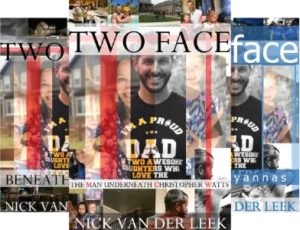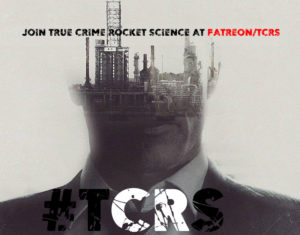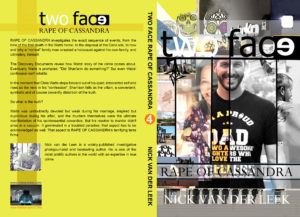Where a crime is covered up there’s always an absence of evidence.
The absence of evidence is evidence.
After the first two episodes [with two to go], it may be too quick to criticize [or compliment] Oxygen’s documentary on Rebecca Zahau – Death at the Mansion. But based on what I’ve seen I do have a few comments. We’ll see if any of these issues are brought up or resolved in the final two episodes.
I don’t know whether the producers of some of these shows go to some lengths to do a sort of true crime cocktease [pardon the term], but it sure feels that way sometimes. They don’t want to seem too biased in the beginning, but then…when do they nail their colors to the mast?

There are a few cases out there that don’t require one to be a Rocket Scientist to see the basic mechanism. I’m not saying the Zahau case is a simple case, but to dedicate the first half of their documentary so far to a game of “on the one hand X” but “on the other hand Y” tends to get a little tedious. After two episodes it still feels like an about even score on both sides, and that’s not good.
A decent investigation finds its feet fairly early on, not prematurely of course, but it develops a theory and then over time, assimilating the evidence but keeping an open mind, it fine-tunes and tightens the screws. But we don’t see that here, we simply see more information adding to the tension, more exculpatory evidence versus more incalpatory evidence, and the viewer is left – intentionally – with what ultimately amounts to a middle-of-the-road neither-here–nor-there analysis.
In many of these documentaries we see the same thing. They bring in a revolving door of experts and yet they never quite seem able to choose which side of the fence they want to be on. This is no accident, of course, but from the purview of an authentic investigation, it’s kinda sucky isn’t it?
I get it. To be too on-the-chin where a suspect hasn’t been convicted, where the police case and will to prosecute is weak is risky. To be too explicit about where you’re driving at when huge sums of money [massive resources] are available for litigation if a narrative oversteps the line, is dangerous and bad for business for any media player.
But there is a way to point fingers at evidence that’s a deeper dive than the light vanilla analysis we see. We see so many TV shows giving the appearance of investigations. If you’re going to investigate a case, investigate it. Forget about bias, don’t pretend to forget about it. What do I mean?
Both images above appear – fleetingly – in the documentary, but thus far neither the balcony floor nor the railing have been discussed in any detail. The image on the left depicts a few toe impressions and a single boot impression in the thick grime and dirt of the balcony.
In their online coverage, Oxygen rightly notes that the boot print was traced to a responding officer. Now although they’ve recreated how a knot could be self-tied, and gone to speak to some “experts” in bondage, why not take it further and try to recreate stepping into the dirt on the balcony and leaving as few toe prints as Rebecca did. That’s the first part of the equation.
The second part is the railing itself. The black, wrought iron railing was 36 inches high, or 0.91 meters. In the image on the right above, there’s very little dirt rubbed away off the surface of the railing. Rebecca was short, 5 feet 3 inches [1.6 meters] and if her legs were bound as well her hands, she would have bent over the railing and smudged the dirt off as she toppled over. Also, her hands and clothing should contain traces of the same grime.
During the civil trial a forensic kinesiologist [James Kent] made the same observation. Kent stated:
“She would have to fall forward onto the railing. She wouldn’t go over because her center of gravity is below the railing.”
More on this topic: Zahau could not have tipped herself over balcony in suicide, expert testfies – SanDiegoTribune
Jurors Hear Evidence in Coronado Mansion Mysterious Death – NBC San Diego
Here’s a closer view. Notice even where the rope is in its final position, the grime seems undisturbed. There is a small area on the far left which is about the size of a hand or a few fingers. But it’s hard to imagine someone short stepped over the railing.

The alternative is that she placed her feet on the metal latticework below, leaned over and then slipped off. But then we should see indentations or grime rubbed off on the latticework.
I would also like to see the view neighbors might have of that balcony, and the line of sight angles onto it. This is somewhat visible in aerial photos, but there are almost no photos taken from the balcony itself showing line of sight to the neighbors while standing on the balcony, and from neighbors to the balcony. This is important because if she was murdered, the murderer wouldn’t want to be seen out in the open.

The absence of smudge marks or prints on the floor and railing suggest Zahau may have been tossed over the railing, rather than dropped. This may be why her killer felt so many knots were necessitated, and the reinforcing use of the bed post to “anchor” her fall – all so he could remain out of sight. And if that’s the case, did her body swing back and damage the cactus below?


If it was a suicide, why not simply tie the rope to the balcony? Why this complicated apparatus?

The other aspect that I thought was both strong and weak was the input from the criminal psychologist at the end of episode two. The expert provided a little nugget of insight that Rebecca was a disciplined, mentally strong and stable person. This goes against the idea of a spontaneous act. I’m not sure one needs to be an expert to see that, but it’s nevertheless a valid point.
Hickey mentions investigating many cases over the years and never seeing a situation like this – with a woman taking off all her clothes and then supposedly committing suicide. I have. The Rohde case. That was also case involving a multimillionaire, staged to look like a suicide.
Handyman shows how he released naked Susan Rohde from curling iron cord
My tears fell on Susan Rohde’s naked breasts‚ says ex-priest
One of the strongest elements in the first two episodes, besides the 911 call from Xena [where Rebecca can be heard whimpering in the background] is the input from the Crime Scene Analyst, or CSA.

The expert describes the coarse, abrasive language and style of the black brushstrokes against the door. The expert suggests that the original intention – if it was murder – wasn’t to commit murder, but something else. And then that something else had to be covered in a rushed, haphazard and spontaneous manner. 
The final two episodes of DEATH AT THE MANSION are on June 15th [Seeking Justice for Rebecca] and June 22nd [Final Theories].
















 And increasing the angle of elevation…
And increasing the angle of elevation…































Recent Comments